The former Chrysler brands returned with Maserati, Fiat, and Alfa Romeo to the New York Auto Show in 2025, on the 101st anniversary of the first time a Chrysler was shown to the public. One result of this was the unveiling of that Chrysler at the New York Auto Show—101 (or as Stellantis calls it, 100) years after its first showing. (This particular car might not ever have gone to the show—one Chrysler B-70 was earmarked for the reporters’ hotel lobby.)
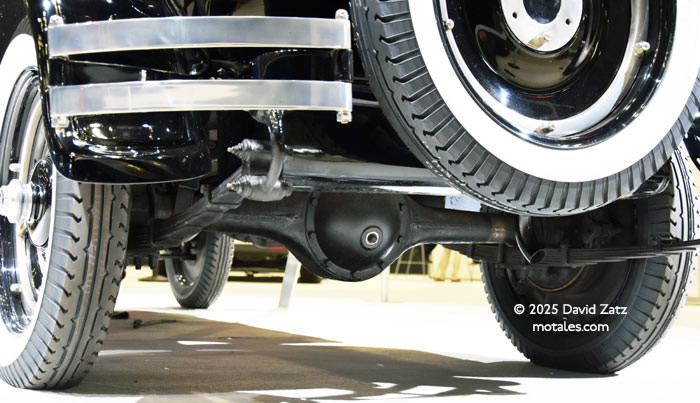
The Chrysler was a technological tour de force for its day, with the first practical hydraulic brakes—a Lockheed design which was unusable until Carl Breer and his engineers redesigned it almost completely. The car is still immaculate, even as seen from behind-and-underneath.
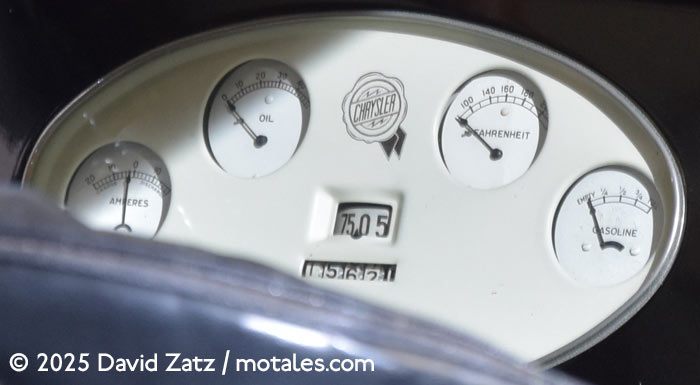
The Chrysler was a technological tour de force for its day, with the first practical hydraulic brakes—a Lockheed design which was unusable until Carl Breer and his engineers redesigned it almost completely.

One question is whether this was the car on display at the Walter P. Chrysler Museum for many years—it quite probably was. In any case, we have many more photos on our 1924 Chrysler B-70 page, so let’s move on to the more modern era—well, maybe we should look at a Dodge Brothers car first:

This 1927 Dodge Brothers touring car, which bears a striking resemblance to the Chrysler (and to past Dodge Brothers cars), was the third oldest car on display after a 1909 Cadillac and a Model T at the show, in a display of cars that may have been shown in New York in the past 125 years. Here it is up close—with a decorative thermostat atop the radiator cap:

Chrysler was the first to actually have a thermostat on the dashboard, which ended a thriving aftermarket trade in external thermostats but also made life easier for the driver.
Let’s head down to the Chrysler area, which was between Ram and Jeep. There aren’t many Chryslers to show, but they had the 1924 car right out front, and the modern Halcyon on the other end. You might think they would take a few others out for the anniversary, but for that you may have to journey to Carlisle, Pennsylvania.
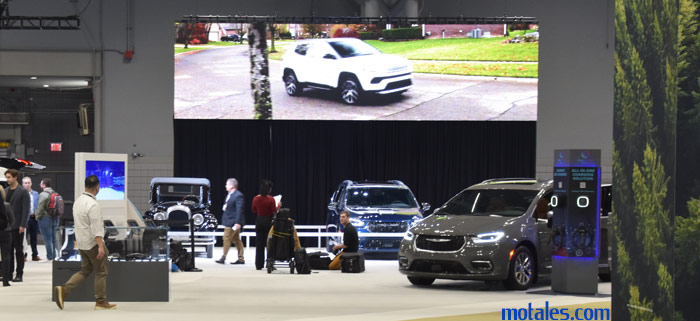
The Halcyon certainly is different from Chrysler’s 1924 and 2024 cars, though some could draw similarities with the 1980s’ M4S.


The new Chrysler logo is backlit—and seems to be “production intent” for future cars, even now.
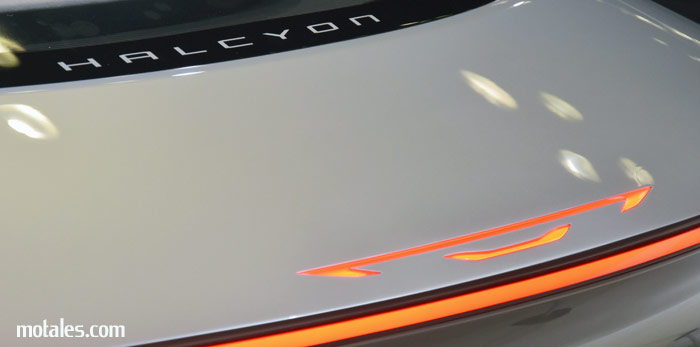
There were two Charger EVs on display, just as two Chargers were running the electric-car rides in the lower level.

Interestingly, the Wagoneer S and Charger have almost identical center stacks, including a touch-sensitive strip which does click when you press it. It's not ideal for feeling your way as you drive, which is odd for a driver's car, and the climate control requires multiple presses to change the temperature—maybe not a big deal with a thermostat.
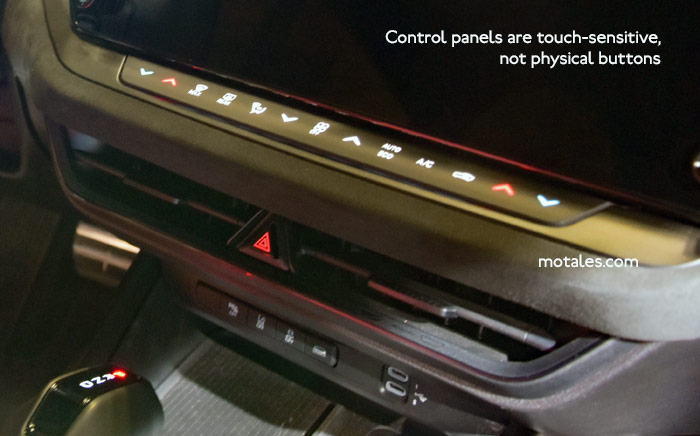
Despite regenerative braking taking most of the stopping duty, the Charger has some pretty serious brakes on massive rotors. The fratzog symbols don't appear to move freely, suggesting someone popped them off and popped them back in again perfectly straight.

There was a cutaway Ramcharger display, fresh from the Chicago show:

This is the serial hybrid / battery-electric pickup which many are more excited about than the Ram 1500 REV, which is battery-only. GM and Ford don’t have anything like the Ramcharger—yet.
Before we go downstairs, here are the Fiats and Alfa Romeos, all the way in the corner, looking a bit lonely.

Downstairs and outside were both more fun than the static displays upstairs, once one was done looking at the 1924 Chrysler from a distance and wishing we had brought a stepladder. First we went all the way to the southern end to register for the electric rides, then we walked past various manufacturers’ tents (to protect them from the interior rain and hot interior sun lamps) to sign in with Dodge or Jeep. The two did require separate sign-ins.

Two Wagoneer S electrics were on duty, both seemingly in constant use, as well as two Chargers. It seemed that these Chargers and the Cadillac SUV were the most used electrics on press day (the photo below is from press day, when most of the booths were empty).
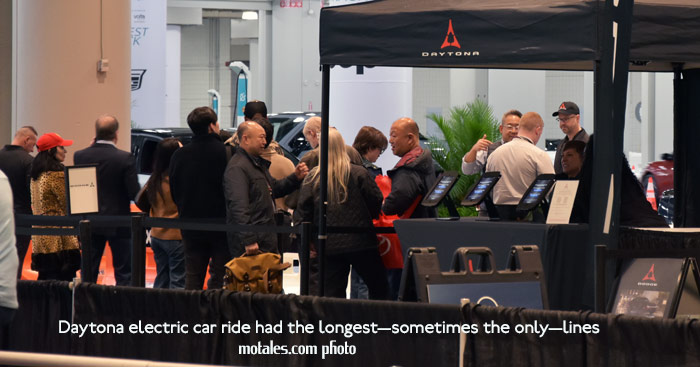
Gene Yetter, who visited during public days, wrote: “Of all the booths processing rides, the most popular, hands down, was Dodge’s. I stood on line for an hour and a half before I got my ride. I estimated about 80 people ahead of me when I joined the line. At any other booth I would have been done with it in a few minutes.”
I started out with the Wagoneer S (video above), then it was time to try out the Charger. The driver didn’t really test the handling to as much as he could, the acceleration was thrilling, with the 0-60 time easily besting the old 392 cars and in Hellcat territory (not Demon, though!). The Wagoneer S, it must be told, outruns the Grand Cherokee Hellcat.
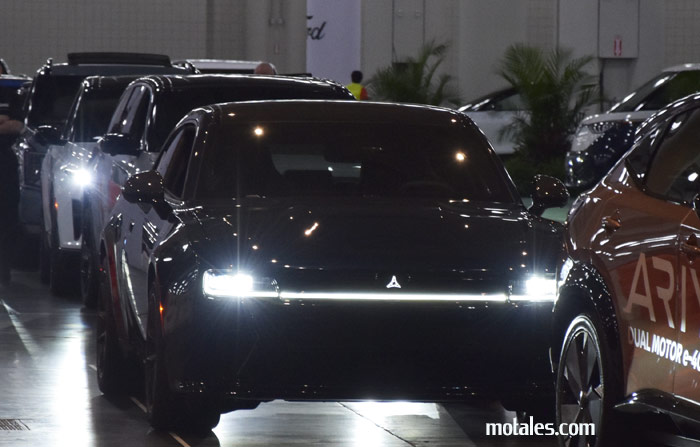
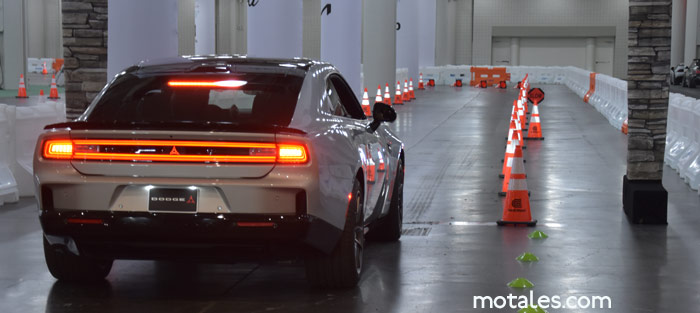
The New York Police exhibits were much smaller and shrunk into a single square that pedestrians could not enter, with just one vintage car—this Plymouth. Gene added that on public days, “There was a lot to see downstairs. The Marine band entertained us during the wait. Law enforcement was on hand, perhaps fishing for recruits.” (The Marine display was closed during the media days, and the police cars were in place but no people were there to talk about them.)

Then it was outside for Camp Jeep.
As always, Camp Jeep is a bit thrilling and a bit bizarre, set amongst the skyscrapers (which have proliferated since they extended the 7 line and got rid of all the taxi repair shops that used to use the cheap, hard-to-reach-by-train space near Javits). At least one of the obstacles is steeper and more severe than it was, and it’s hard not to feel at one point or another that you’re going to fall over or fall backward. See the video above for footage from inside; here are some pics from outside.



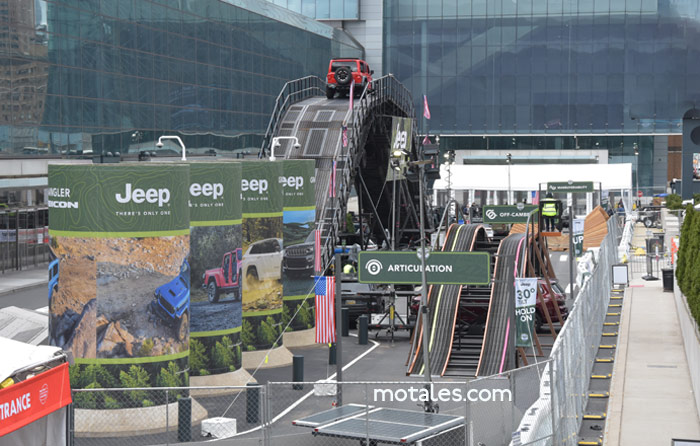

The show has more manufacturers than last year, including all the Stellantis brands.
See the show map, find the hours and dates it will be open, and buy tickets